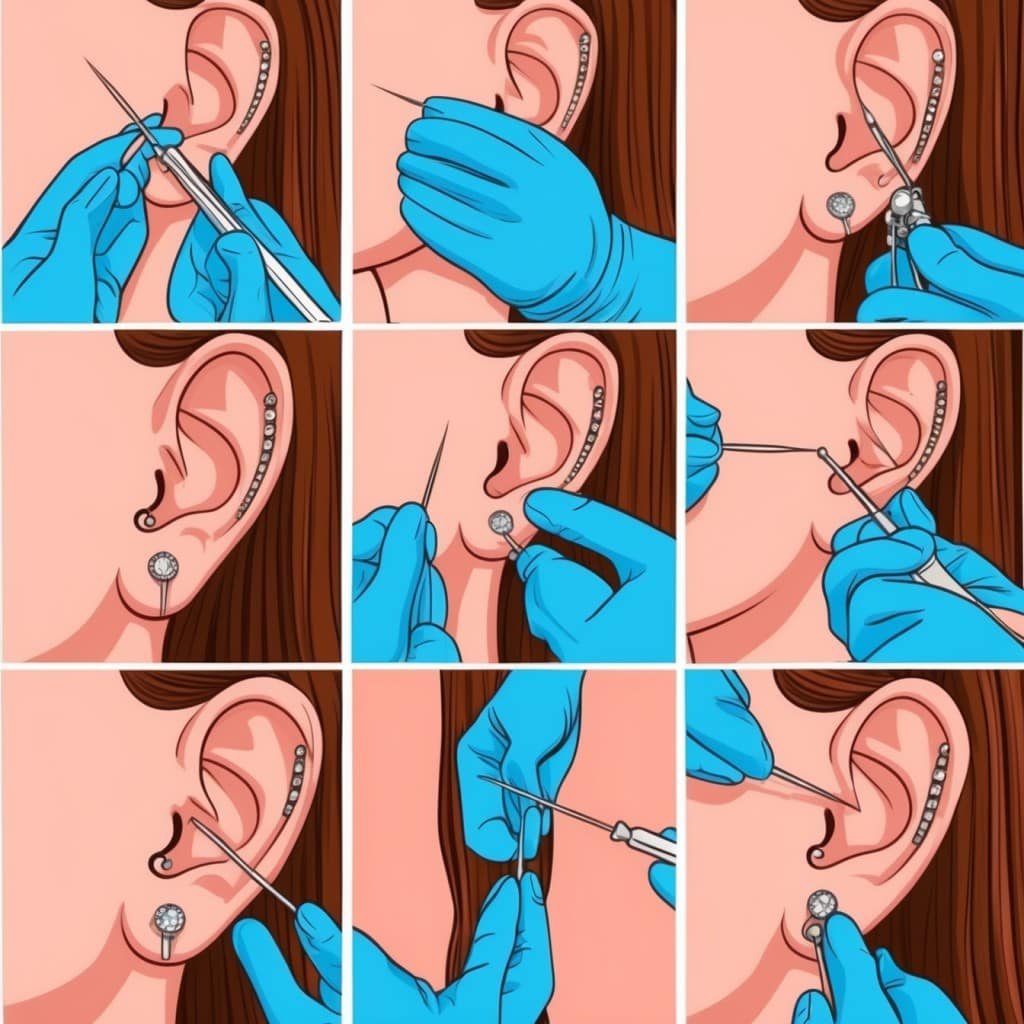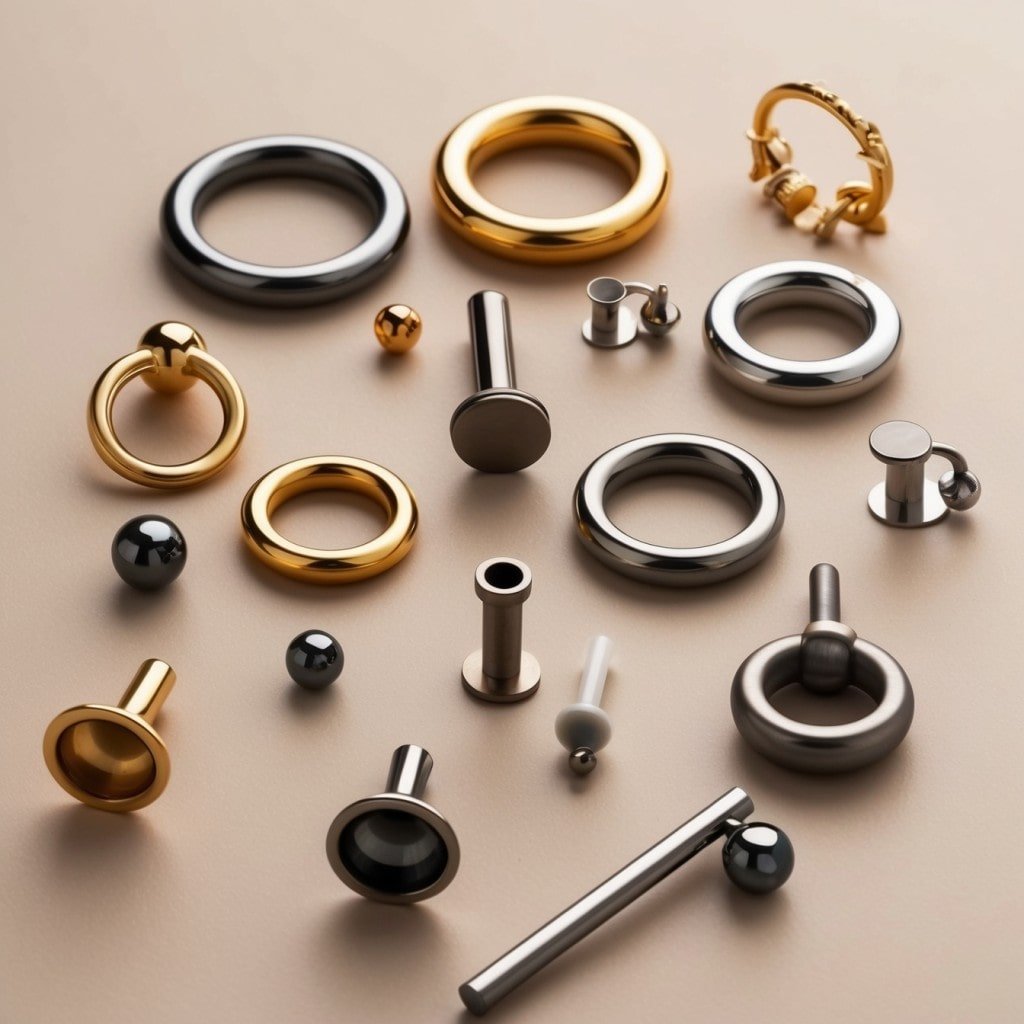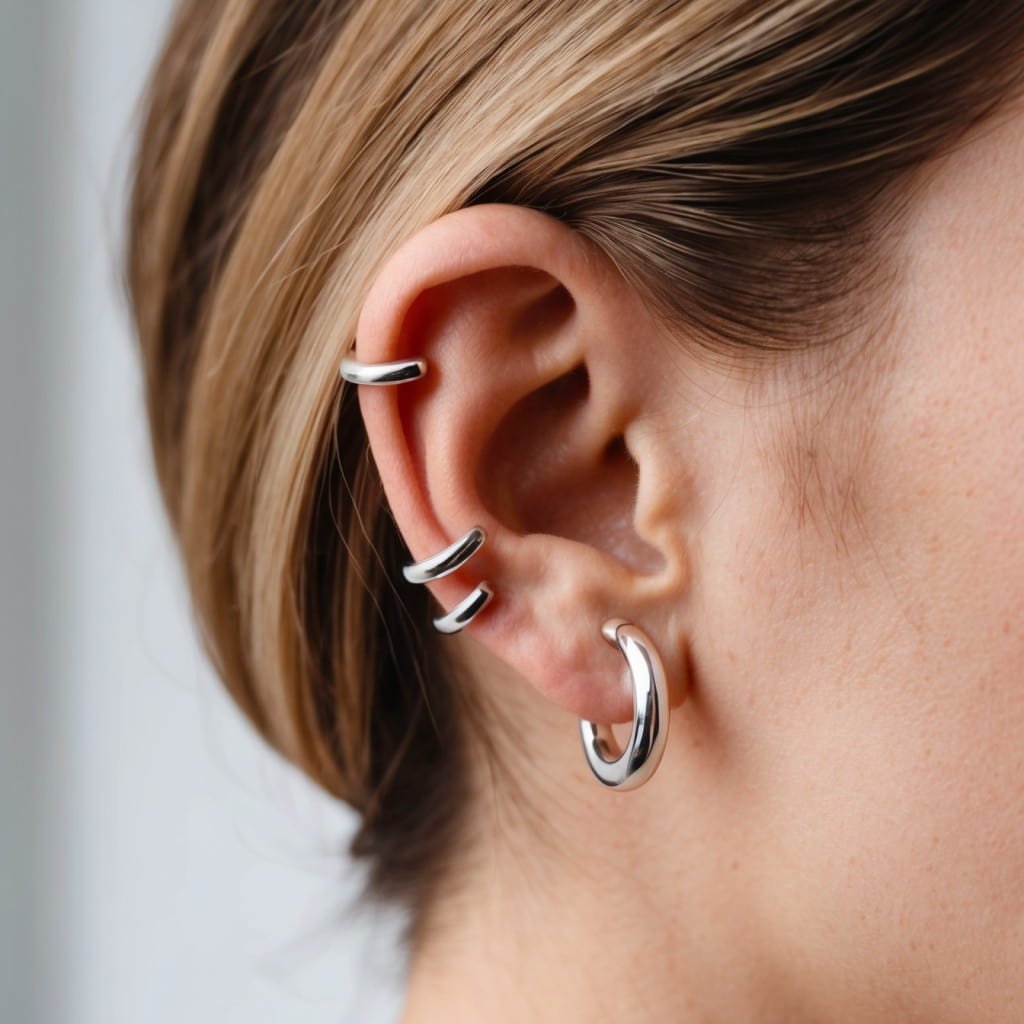When it comes to body modifications, ear piercings have always been a popular choice. Among the various ear piercing styles, daith piercing stands out due to its unique positioning and its supposed benefits, particularly for those suffering from migraines. In this comprehensive guide, we’ll cover everything you need to know about daith piercings—from the procedure to jewelry options, healing, and common questions.
What is a Daith Piercing?
A daith piercing is a perforation of the ear’s innermost cartilage fold, just above the ear canal. Because of its placement, it’s considered one of the more intricate and delicate piercings to get. It also holds a certain level of mystique because of its rumored ability to alleviate migraines by targeting an acupuncture pressure point in the ear.
Why is Daith Piercing Popular?
One of the reasons daith piercings have grown in popularity is the aesthetic appeal—it’s subtle yet stylish, especially when paired with the right jewelry. Beyond looks, there’s also the claim that daith piercings help relieve headaches and migraines, although scientific evidence on this is still inconclusive. Whether it’s for fashion or potential health benefits, many find this piercing attractive.
How is a Cartilage Piercing Done?

Getting a daith ear piercing requires a professional piercer with experience in cartilage piercings. The process involves using a sterile needle to puncture the thick cartilage fold, followed by the insertion of jewelry, usually a captive bead ring or curved barbell.
Step-by-Step Process:
- The piercer cleans and sterilizes the area.
- A mark is made on the ear to ensure the piercing is done in the correct spot.
- Using a needle, the piercer creates the hole in the cartilage.
- Jewelry, typically a small ring or barbell, is inserted into the hole.
The procedure is generally quick, but since it involves cartilage, it can be more painful than standard earlobe piercings. If not taken care of properly, piercings can lead to infections. Learn more about the risks associated with body piercings(University Health Services).
Does a Daith Piercing Hurt?
The big question: How much does a daith piercing hurt? Since cartilage piercings involve a denser part of the ear, they tend to hurt more than lobe piercings. On a pain scale, it’s usually around a 5 to 7 out of 10. Most people describe the sensation as a sharp pinch, followed by throbbing for a few hours after the piercing.
Factors That Influence Pain:
- Pain Tolerance: Some individuals naturally handle pain better than others.
- Piercing Technique: A skilled piercer can make the process less painful and more efficient.
- Aftercare: Proper aftercare can minimize post-piercing discomfort.
Daith Piercing Healing Time: What to Expect
Like all cartilage piercings, daith piercings take a while to heal. On average, the healing time can range from 3 to 9 months, depending on how well you care for the piercing and your body’s natural healing process. Some people heal faster, while others may experience longer healing times. If infection occurs, it’s important to monitor symptoms carefully, as some infections may require medical attention. Read more about infections from ear piercings(University of Utah Healthcare).
Healing Stages:
- Initial Healing (0-3 Months): The area will be swollen, tender, and possibly red.
- Midway Healing (3-6 Months): Swelling subsides, and discomfort decreases, but the area is still not fully healed.
- Full Healing (6-9 Months): The piercing should no longer feel sensitive, and the risk of infection is lower, although care is still required.
Aftercare Tips for Daith Piercings
Aftercare is crucial to prevent complications such as infections or bumps. Following these tips can help ensure a smooth healing process:
- Clean the Piercing Regularly: Use a saline solution or saltwater to clean the area twice a day. Avoid alcohol-based products, which can dry out the skin and cause irritation.
- Avoid Touching the Piercing: Refrain from touching, twisting, or playing with the jewelry, as this can introduce bacteria and slow healing.
- Keep Hair and Products Away: Hair products like sprays, gels, or oils can irritate the piercing. Try to keep these substances away from the pierced area.
What to Do If Healing Takes Longer?
If your daith piercing takes longer than expected to heal, there could be a few reasons for the delay:
- Infection: Signs include increased redness, swelling, heat, or pus around the piercing.
- Jewelry Material: Some individuals may be allergic to certain metals like nickel. In this case, switching to hypoallergenic materials like titanium or surgical steel can help.
- Improper Aftercare: Not cleaning the area regularly or using improper cleaning agents can slow down the healing process.
Choosing the Right Daith Piercing Jewelry

Choosing the right jewelry for your daith piercing is not only a fashion statement but also crucial for comfort during the healing process. The two most popular jewelry choices are:
- Captive Bead Rings: These rings are secure and ideal for the initial stages of healing.
- Curved Barbells: A slightly more decorative option that fits snugly into the daith’s curved shape.
Best Materials for Jewelry:
- Titanium: This is a great option for those with sensitive skin. It’s hypoallergenic and lightweight, reducing the risk of irritation.
- Surgical Steel: Another hypoallergenic option, surgical steel is durable but may contain trace amounts of nickel.
- Gold: Opt for 14k or 18k gold to avoid irritation. Keep in mind that gold is softer and can be more easily scratched.
Can Daith Piercing Help with Migraines?
One of the reasons daith piercings have gained so much attention is the claim that they can help reduce migraine symptoms. The theory is that the piercing mimics an acupuncture point, which, when stimulated, could alleviate headache pain. However, there’s no scientific evidence to back this claim, and while many anecdotal stories exist, the medical community remains skeptical.
Risks Associated with Daith Piercing
While daith piercings are generally safe when performed by a professional, they do come with some risks:
- Infection: Poor aftercare or exposure to bacteria can lead to infection.
- Scarring: If the piercing doesn’t heal properly, it could result in scar tissue.
- Rejection: In rare cases, the body may reject the piercing, pushing the jewelry out.
Can You Sleep on a Daith Piercing?
During the healing process, it’s best to avoid sleeping on your daith piercing. Pressure from sleeping on the side of the pierced ear can lead to discomfort, swelling, and delayed healing. Some people find that using a travel pillow, with their ear resting in the center, can help them sleep without putting pressure on the piercing.
FAQs About Daith Piercing
Q: How long does it take for a daith piercing to stop hurting?
A: The pain usually subsides within a few hours to a day, but tenderness may last for several weeks. Full healing takes longer—anywhere from 3 to 9 months.
Q: Can I swim with a daith piercing?
A: It’s best to avoid swimming in pools, lakes, or oceans until the piercing has healed. Water can introduce bacteria, increasing the risk of infection.
Q: Can I change my daith piercing jewelry during healing?
A: It’s recommended to wait until the piercing is fully healed before changing jewelry. If you need to switch it earlier, consult your piercer.
Q: Is there a specific age requirement for daith piercings?
A: Most reputable piercers require clients to be at least 18 years old or have parental consent for minors.
Q: How much does a daith piercing cost?
A: The price varies depending on location and the piercer’s experience, but generally, a daith piercing can cost between $30 and $80, not including jewelry.

